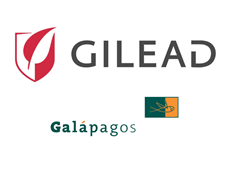 With Gilead Sciences’ hepatitis C sales revenues from Solvaldi and Harvoni fading and lower than expected Yescarta sales, the company has been looking for new products to bolster its pipeline. In mid-July, Gilead addressed some of this need by deepening ties to an existing partner, Galapagos. The two companies have formed a 10-year, $5.1 billion alliance that gives Gilead rights to all of Galapagos’s current and future programs outside of Western Europe. The deal is also attractive for Galapagos, who is seeking to build a viable stand-alone pharmaceutical company in Europe. It gives the Belgian company the resources needed to build its commercial business, as well as 50:50 rights for current and future products of the alliance in that territory.
With Gilead Sciences’ hepatitis C sales revenues from Solvaldi and Harvoni fading and lower than expected Yescarta sales, the company has been looking for new products to bolster its pipeline. In mid-July, Gilead addressed some of this need by deepening ties to an existing partner, Galapagos. The two companies have formed a 10-year, $5.1 billion alliance that gives Gilead rights to all of Galapagos’s current and future programs outside of Western Europe. The deal is also attractive for Galapagos, who is seeking to build a viable stand-alone pharmaceutical company in Europe. It gives the Belgian company the resources needed to build its commercial business, as well as 50:50 rights for current and future products of the alliance in that territory.
This is a big commitment for Gilead, who is paying $3.95 billion upfront and making a $1.1 billion equity investment at a 20% premium in Galapagos, as well as many millions in potential milestones for the two most advanced clinical-stage products, plus opt-in fees of $150 million for other earlier stage programs that Gilead chooses to pursue. The deal also increases Gilead’s stake in Galapagos to 22%, with the option to further increase its ownership to a maximum of 29.9% over the course of the agreement.
Gilead was already a partner in Galapagos’ JAK1 inhibitor, filgotinib, and the companies expect to seek approval for this drug candidate in both the United States and Europe by the end of this year as a treatment for rheumatoid arthritis. The expanded alliance gives Gilead a stake in two more advanced products in the inflammatory disease area, a recent focus for Gilead: an autotaxin inhibitor, GLPG1690, in Phase 3 testing as a potential treatment for idiopathic pulmonary fibrosis; and an ADAMTS-5 inhibitor, GLPG1972, in Phase 2b testing for the treatment of osteoarthritis. The deal also gives Gilead rights to four additional clinical-stage assets, 20 preclinical programs, and any future programs that move into clinical development over the next 10 years. Galapagos is expected to work autonomously and fund all research and development through the end of Phase 2, and then co-develop and split the costs with Gilead for those programs that the companies advance.
Despite Gilead’s big outlay for this deal, many industry watchers see it as a savvier move for the company than an outright buy-out of Galapagos, which wanted to remain independent. Gilead’s CEO, Daniel O’Day, believes the alliance will create more value than an acquisition would without the distractions of trying to merge the two companies. And while the size of the deal is noteworthy, the arrangement is similar to past collaborations undertaken by Roche with Genentech (prior to Roche’s taking full ownership of its partner in 2009), and Sanofi with Regeneron.
Is the Gilead-Galapagos alliance a harbinger of future collaborations of this sort? Or will pharmaceutical industry mergers and acquisitions — on an upswing in the last eight months — continue to be the norm? Which model will prove best for creating value? We’ll be watching.